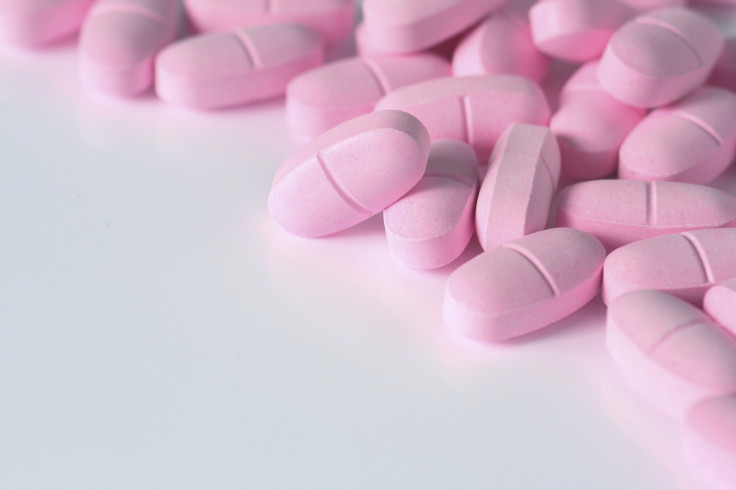Female Viagra: The controversy over 'pink pill' flibanserin awaiting FDA approval
Flibanserin was originally created as an anti-depressant

At first glance, the statistics don't look good. Around 43% of women in the United States experience sexual dysfunction, compared to 31% of men, according to the women's health equity group Even The Score. Yet of the variety of drugs approved to address the problem, none are aimed at women.
As a result of pressure from the organisation, the Food and Drug Administration (FDA) are considering approving a drug to restore women's libido called flibanserin, 17 years after the first male equivalent was given the green light. Over 60,000 supporters have signed an online petition to approve the drug dubbed "Viagra for women" – but is the FDA really against treating sexual dysfunction, or is the problem that we don't know how to?
Flibanserin was created by a German pharmaceutical company called Boehringer Ingelheim and, like the discovery of Viagra, it was a happy accident. It was originally created as an anti-depressant, decreasing the impact of inhibitors like serotonin and increasing the effects of dopamine, but was found to be a poor treatment.
But while women were being questioned about their trial experiences, a significant number reported an unexpected positive side effect from flibanserin – increased sexual interest and overall, more satisfying sexual experiences than before. Sprout Pharmaceuticals, a North Carolina drugmaker, is now behind the pill. The company says its clinical trials have shown that when placebo is accounted for, women can experience a 37% increase in sexual desire.
But as with all new medications, it is not without its problems. Critics say there is little proof that flibanserin is actually an antidote to hypoactive sexual desire disorder – HSDD – which is characterised by a missing desire for sex. So far, the FDA has not found evidence that the benefits of the drug outweigh the risks.
When the drug was reviewed in 2010, the FDA warned of dizziness, nausea, headaches and fatigue, stating the overall response rate was "not particularly compelling". The FDA advisory panel voted 10 to one that flibanserin was not significantly better than a placebo. And while pills for male sexual dysfunction are taken when needed, flibanserin is to be taken every day and will impact the central nervous system, which some say necessitates further long-term testing.

But Susan Scanlan, chairwoman of Even The Score, has pointed out that Viagra can have various serious side effects and the reason the FDA has not approved flibanserin is evidence of their discomfort with women taking control over their sexuality. "The implication is that men can be trusted to make a rational decision of risk versus reward and women can't," she said.
Even The Score states there are 26 drugs marketed for the treatment of male sexual dysfunctions, but none for women. But the number is somewhat distorted − the majority of the drugs to treat male sexual dysfunction are different formulations of testosterone, but none are specifically approved to treat low sexual desire (although it can be a symptom of testosterone deficiency).
Some say the disagreement over whether flibanserin should be approved should – as with all medications – comes down to whether they are safe or not, rather than focusing on the sociological impacts of pushing forward a "women's Viagra". Supporters of the FDA's stance say the pressure put on the organisation regarding the lack of treatment for women is a strategy to sway the administration into overlooking potential risks associated with the drug.
"It's not sexist for the FDA not to approve a drug that it doesn't believe is effective or safe," Dr Adriane Fugh-Berman, an associate professor at Georgetown University Medical Center and the director of PharmedOut programme, told Science 2.0. "It's a classic marketing technique to first create a problem and then sell the solution, and that's what's going on here."
Part of the problem of treating HSDD in women is that the causes are still subject to debate. In men, the problem is partly biological: the most common sexual problem reported is erectile dysfunction, mainly a mechanical matter of blood flow to the penis that can be improved with Viagra.
Yet a lack of desire in women can, according to some experts, be attributed to biology and brain chemistry – but psychological reasons also underpin low sexual desire, such as stress or a lack of communication with a partner. Societal problems of inequality are also to blame, in part, because sex is frequently built upon masculine desires. With this complex combination of factors in mind, it is difficult to solve the problem of HSDD with just one small, pink pill.
The FDA has recognised female sexual dysfunction as one of its 20 priority areas of unmet medical need, and it is certainly a problem that needs to be addressed. There is one thing both sides agree on, however: finding an effective drug to treat female sexual dysfunction is difficult.
© Copyright IBTimes 2025. All rights reserved.






















